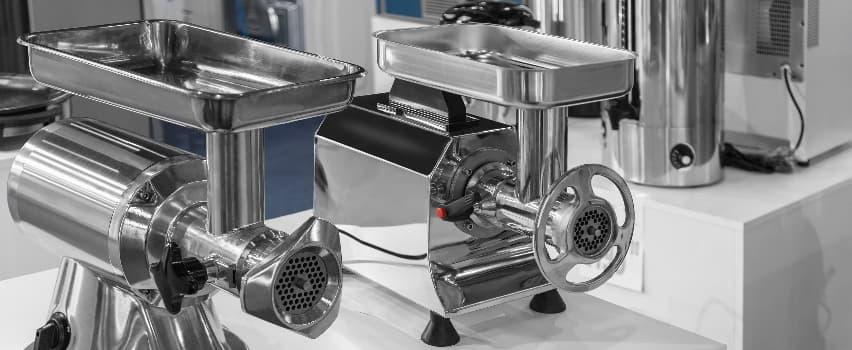5 tell-tale signs your mincer needs new parts
A well-functioning mincer is essential for keeping your butchery running smoothly, ensuring that every cut of meat is processed to your standards and ready for sale or preparation. Over time, even the most robust machines experience wear and tear, which can affect their performance. If you notice changes in how your mincer operates, it might be time to replace certain components. That’s exactly where we can help here at Butchers Equipment Warehouse, with our wide range of mincer spares. Below, we’ll summarise a quick round-up of the key signs to watch out for!
Blades that no longer cut efficiently
Blunt blades are one of the first indicators that your mincer needs new parts. When your mincer’s blades lose their sharpness, you’ll notice the meat coming out more mashed than minced, with an inconsistent texture. This can impact the presentation of your products, which in turn affects how customers perceive the quality of your work. Blades naturally dull over time due to repeated use, especially when processing tougher cuts or higher volumes of meat, and this makes them work harder than they should.
You might also notice that you’re having to put more effort into operating the mincer or that it’s taking longer to get through your usual quantities. This is a clear sign that the blades are no longer cutting as they should. Replacing them restores the machine’s efficiency, giving you cleaner cuts and helping you maintain a consistent standard across all your products. In many cases, replacing the blades also reduces strain on the motor, extending the lifespan of your mincer and keeping its overall performance at a level you can rely on every day.
Unusual noises during operation
Generally your mincer should produce a steady, familiar sound when it’s running. Any unusual noises like grinding, screeching, or rattling suggest that parts inside may be worn or misaligned. These sounds often come from internal components such as gears, bearings, or bushings that have started to degrade. The noises can be indicative that the machine is about to suffer some serious damage, so it’s important to address them as soon as they appear.
If your mincer is making noises that weren’t there before, it’s likely that parts have either shifted or started to fail completely. Regular checks and timely part replacements are both crucial to ensure that these issues don’t escalate, protecting both the machine and the quality of your output. As well as eliminating the noise, replacing the parts also brings the machine back to smooth, reliable operation. You’ll also avoid unexpected breakdowns that can disrupt your schedule and create downtime at the worst possible moments.
Visible wear on key components
As a general rule, you’ll want to inspect your mincer regularly, as it helps you spot visible wear on parts such as the plates, auger, or seals. Over time, these components can develop cracks, chips, or distortions that affect how well the mincer performs. A damaged plate can result in uneven mincing, while a worn auger might struggle to push meat through effectively. Problems like this can really slow down your work and – arguably more importantly – compromise the quality of your products. Another underestimated factor is that replacing parts promptly also helps maintain vital hygiene standards, as damaged parts can sometimes make cleaning more difficult and leave hidden residues that affect food safety.
Difficulty processing meat
When your mincer starts struggling with jobs it used to handle easily, that’s obviously a very clear sign that something isn’t right. This might manifest as the machine stalling or slowing when processing meat, even if you’re not working with large quantities. Often, this difficulty comes from worn or damaged parts that are no longer able to manage the workload effectively. Addressing these issues early prevents unnecessary stress on the machine’s motor and keeps your operations moving at the pace you need. It also avoids the risk of staff potentially overcompensating by forcing the machine, which can cause further wear or damage, and lead to costlier repairs later on.
Frequent blockages or jams
A properly working mincer should handle meat with minimal interruptions. If you’re dealing with regular blockages or jams, that generally indicates a deeper problem. Worn blades, damaged plates, or issues with the auger can all cause meat to clog the machine more often than usual. All issues which can slow your work, and can become frustrating when you’re trying to keep up with your tasks. Regular part replacements also protect the motor and other internal components from the strain caused by frequent stoppages. Keeping spare components on hand helps you respond quickly if blockages start to become more common, ensuring you can keep your production schedule on track.
And speaking of maintaining a stock of components, that’s exactly where we can help here at Butchers Equipment Warehouse. That includes supplying a great range of mincer spares, and even brand new mincer machines if you feel that yours is well and truly past its best. Feel free to explore our site for spares and mincers at the very best prices – and if you’ve got any questions or need any advice, you can always get in touch with us on 01254 427 761 or [email protected]. Our team is always here to help!




